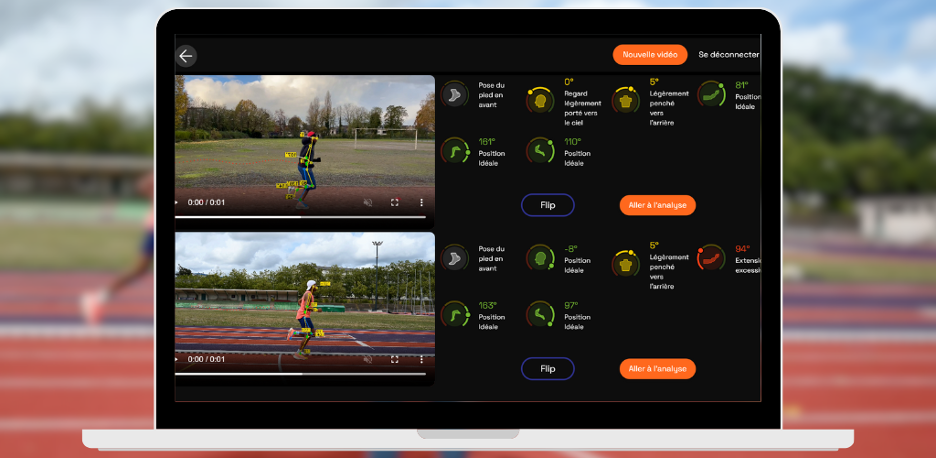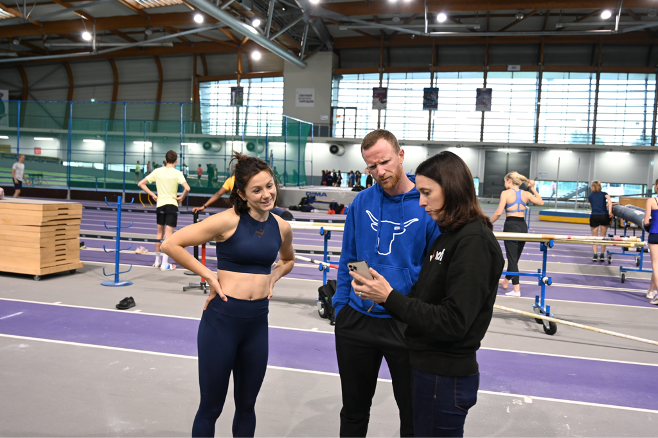Introduction
Michael Chang, a former top tennis player, once said: “You can work really hard, but if you're not training the right way, you're not going to get to the level you want.”
As a coach, it's essential to adapt training programs to the specific needs of each athlete. A study in professional football demonstrated that using data analysis to personalize training reduced injury risk by an average of 33%.
This is where OCHY comes in. With our innovative technology, you can access laboratory-quality biomechanical analyses at a reduced cost, in less than 60 seconds, all from your smartphone. Gone are the days of expensive and inaccessible labs. OCHY provides additional data and analysis to further personalize each of your training programs.
Improve the quality of your training, accelerate your athletes' progress, and reduce injury risks by personalizing their training programs with OCHY’s biomechanical analysis.
Biomechanical Analysis
Once the analysis is complete, you will have access to precise information and data that you can use in various ways to optimize and personalize your athletes' training.
- Global Analysis : The AI performs a comprehensive analysis of the body and all the joint angles of your athletes. You receive a score, advice, and exercise recommendations for each body part based on posture.
- Metrics : You then have access to metrics you couldn’t previously measure, such as ground contact time, suspension time, step rate, stride length, or step length.
- Running Styles : Athletes are categorized into one of five running styles: Bounce, Hop, Push, Stick, or Sit. Each running style has its pros and cons. Use this information to better tailor your training sessions.

Using the Results with Your Athletes
Once you have gathered the informations and results, share the analyses with your athletes and personalize their training by adding your expertise.
- Adding Comments : For each analysis, you can add notes and recommendations directly in the app. This allows you to further personalize the follow-up for each athlete and incorporate your own insights.
- Sharing Results : In just a few clicks, you can send the analyses to your athletes as a PDF or a link. Athletes can also access their results directly by logging into their accounts.
- Tracking Progress : One of OCHY’s strengths is the ability to compare analyses over time. You’ll be able to track each athlete's progress and adjust their program according to the observed changes.
- Personalized Exercises : OCHY provides specific and targeted exercises based on the results of the body analysis, allowing you to address identified weaknesses. This enhances the effectiveness of your program, diversifies it, and helps athletes focus on areas of their technique that require the most attention.

Why Personalize Training?
Better results, injury prevention, or strengthening the coach-athlete relationship. Personalizing your programs will significantly enhance the impact of your training.
- Faster Performance Progression: By targeting the strengths and weaknesses of your athletes, the proposed exercises combined with your expertise will accelerate their progression.
- Reduced Risk of Injury: By identifying poor postures in your athletes, you can correct defects long before potential pain or injury arises.
- Maintaining Individual Motivation: A personalized training program and follow-up help athletes maintain high motivation levels. Varying exercises and demonstrating progress keep them engaged.
- Closer Monitoring: By personalizing your programs, you become more attuned to each athlete's specifics and more aware of their progress.
- Optimizing the Coach-Athlete Relationship: OCHY is designed to complement your expertise, not replace it. Using this tool, you reinforce your role as a coach by providing greater precision and personalization in your advice.

Conclusion
In summary, OCHY is an essential tool for any coach looking to optimize their athletes' performances. Through biomechanical analysis, you will obtain all the necessary data to personalize your training programs, a key factor in your athletes' progress and achievement of their goals.
It's time to integrate OCHY into your daily practice and take advantage of biomechanical analysis to elevate your coaching to the next level !